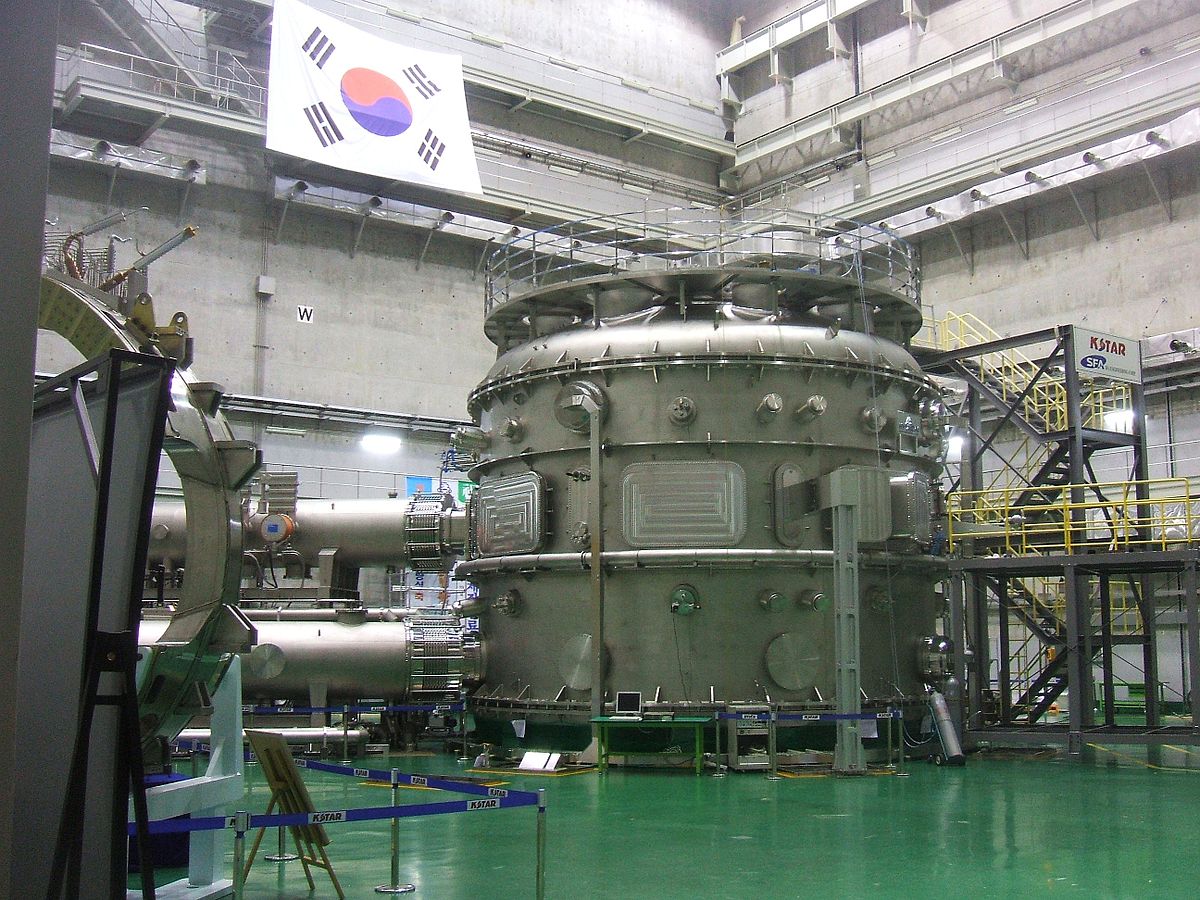KSTAR_tokamak 2.jpg

One of the biggest problems confronting nuclear fusion research is how to maintain a stable plasma while the fusion reaction is taking place. The tokomak fusion reactor design features a donut shaped containment vessel that uses magnetic fields to corral the hot dense plasma. A great deal of research is being carried out on how best to arrange the magnetic fields to prevent instabilities.
If instabilities develop in the plasma, then the plasma may touch to sides of the containment vessel causing damage to the walls of the vessel. This is caused by “edge localized modes” (ELMs) which are flares-like bursts of plasma.
In order to prevent ELMs, scientists have developed technology to produce resonant magnetic perturbations (RMPs). RMPs are small magnetic ripples that are introduced into the donut-shaped ring of plasma in the tokamak. These ripples distort the smooth donut of plasma and release excess pressure. This can reduce or eliminate the ELMs. The most difficult part of this solution is causing just the right amount of distortion to remove ELMs while not causing other types instabilities. If the RMPs release too much energy, it can cause a major disruption in the plasma and stop the fusion reaction.
There are virtually infinite ways in which the plasma in a tokamak may be perturbed by applied magnetic fields. The challenge has been to find exactly the correct perturbations needed to eliminate ELMs without causing other problems. This problem has now been solved.
Jong-Kyu Park is a physicist who works at the U.S. Department of Energy’s Princeton Plasma Laboratory. He is collaborating with teams from the U.S and the National Fusion Research Institute of South Korea. This group has successfully predicted all of the best 3-D magnetic distortion patterns for controlling ELMs which do not cause other problems. The group used the Korean Superconducting Tokamak Advanced Research (KSTAR) facility to validate their predictions. The KSTAR is one of the most advanced superconducting tokamaks in the world.
The KSTAR was used for validation because it has advanced magnetic systems for precisely controlling distortions in the plasma. The best distortion patterns account for less than one percent of the possible patterns. Identifying the best patterns would have been impossible without the new model developed by Park and his associates.
Park published a paper in Nature Physics along with fourteen other coauthors. He said, “the result was a precedent-setting achievement. We show for the first time the full 3-D field operating window in a tokamak to suppress ELMs without stirring up core instabilities or excessively degrading confinement. For a long time we thought it would be too computationally difficult to identify all beneficial symmetry-breaking fields, but our work now demonstrates a simple procedure to identify the set of all such configurations.”
Park and his associates were able to significantly reduce the complexity of calculations for their breakthrough when they realized that the number of types of plasma perturbations were far fewer than the number perturbations. They worked back from the type of perturbations that they wanted to the exact 3-D field patterns that would produce them for the elimination of ELMs.
The validation of the proper patterns which eliminate ELMs will be useful in the design of the ITER, the international tokamak project being constructed in France. The control of ELMs will be critical for the completion of ITER as it attempts to produce ten times as much energy as is required to heat its plasma. The authors of the paper in Nature Physics said, “the method and principle adopted in this study can substantially improve the efficiency and fidelity of the complicated 3-D optimizing process in tokamaks.”